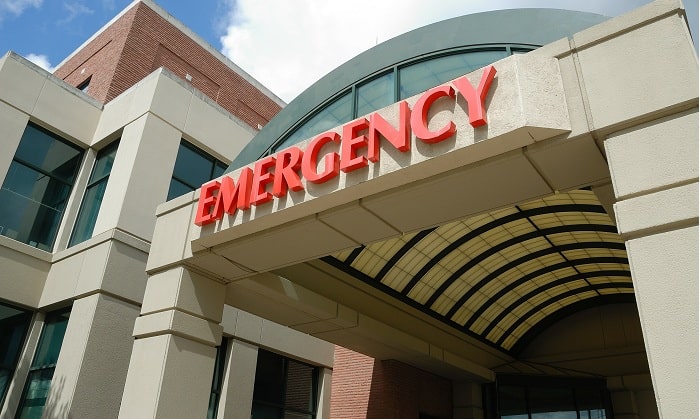The coronavirus has gripped the world in fear and uncertainty for the entirety of 2020. With new strains of the disease making their way to various countries, the same feeling of dread extends to 2021. But vaccinations have since started, and many can heave a sigh of relief.
However, hospitals are still struggling to keep up with the surge of patients due to COVID-19. This doesn’t leave much room for those who need to visit the emergency room for other reasons.
Common illnesses and vehicular mishaps such as bus accident negligence can occur anytime. The latter can cause severe pain and injury to those parties involved, especially to the passengers. During these times that emergency visits cannot delay, hospitals must be ready to receive all kinds of emergencies.
Here are the ways that hospitals are coping with the situation:
-
Improving Outpatient Management
Outpatient clinicians strive to improve management by being proactive at emergency departments, especially to patients with diabetes and hypertension. Developing a triage to cater to those suffering from acute conditions directly at emergency departments should also help prevent severe complications later on. Doing so will lower the risks and reduce the demand for inpatient beds and the rise of emergency department count by non-covid patients.
Healthcare workers, or doctors, may utilize telehealth kits to continuously monitor those who are now outside of hospital premises. They may include devices such as heart rate monitors, pulse oximeters, and more.
Digital consultations with patients can also be initiated by virtually meeting with them instead of contacting their respective doctors. Collaborations across specialists, healthcare and social workers, administrative, and patients should be possible this way to ensure that disease management control remains consistent.
-
Centralizing Location for All Critical Non-Covid Services
The untold dangers of patients with non-covid conditions refusing to see their doctors has prompted to promote location-pooling. It means that there should be a single location that must provide all the non-Covid services instead of different hospitals using up valuable resources all at the same time.
It means that if one area of the institution is caring for cancer patients, there should be another designated . It means to balance the flow of patients so that it equates to proper revenue equally distributed to the departments.
-
Setting Guideline for Hospital Visits
Hospital administration can set up guidelines that will allow staff to prepare patients to see their doctors. They can provide a set of instructions that both in can follow regarding the best time to seek medical care, whether in the ER or urgent care.
Both ER and urgent care must conduct advanced diagnostic testing. Hospitals might be using automated software to detect the presence of the virus efficiently and support global healthcare efforts.
Patients can call in for an emergency room visit or contact an ambulance if they are experiencing the following:
- Sudden weakness or numbness
- Chest pain
- Difficulty breathing, wheezing, or shortness of breath
- Unstoppable bleeding
- Dizziness, fainting
- Inability to move, walk, or see
- Vomiting or coughing out blood
- Fever accompanied by convulsions
- Bloody diarrhea or urine
- Abdominal pain
- Head injury, severe headache
- Mental status changes, confusion
If you have any of the following, call for urgent care:
- Fever, flu-like symptoms
- Cough, cold, or sore throat
- Mild injuries
- Earaches
- Mild shortness of breath
- Mild rashes or skin irritations
Urgent care is open to those with non-covid symptoms. Hospitals might limit face-to-face interactions, so it’s still advisable to call and find such precautionary measures before leaving home to visit the hospital.
-
Implementing COVID-19 Safety Measures
Data has found that about 80% of adults are worried about catching the virus at the emergency room. However, hospitals are doing what they can to prevent the spread of the disease inside their institution to provide safe emergency care. As people with non-COVID symptoms must make visits to their respective doctors, hospital staff are making sure to follow protocols strictly at all times.
First, masking is highly promoted, as it serves as protection from possible carriers and prevents those with regular coughs and colds from spreading the common viral infection. The hospital staff provides masks to patients and enforces social distancing to ensure that there’s little to no chance of viral spreading inside the health facility.
Secondly, amenities are divided into two receiving and confinement areas. One, where COVID patients stay and receive treatment, and the other is where patients visit for non-COVID ailments and symptoms.
Thirdly, patients coming into the hospital are screened by taking temperatures or asking relevant questions for contact tracing.
Fourthly, the cleaning crew–wearing protective equipment and armed with tools–are cleaning and disinfecting areas where people frequent, such as at the entrance, restrooms, and various surfaces, while adhering to the COVID-19 hospital cleaning protocols.
In Conclusion
Hospitals are doing their best to keep patients safe during this pandemic. Patients should not be afraid to seek medical help as delays can endanger their health. It’s better to trust hospitals as they know better how to keep the virus at bay more than anyone else.



















